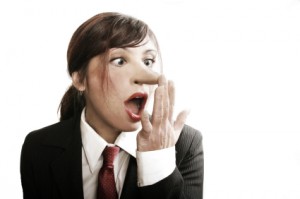“Executing Facial Control During Deception Situations,” a new study he co-authored with former graduate student Carolyn M. Hurley, PhD, reports that although liars can reduce facial actions when under scrutiny, they can’t suppress them all.
Frank, PhD, a professor of communication at the University at Buffalo, supervised and co-wrote the study with lead author Hurley, now a research scientist at the U.S. Transportation Security Administration.
Published earlier this year in the Journal of Nonverbal Behavior, the study examined whether subjects could suppress facial actions like eyebrow movements or smiles on command while under scrutiny by a lie catcher.
It turns out subjects could to a degree, but not completely and not always.
The results are derived from frame-by-frame coding of facial movements filmed during an interrogation in which participants, some lying, some telling the truth, were asked to suppress specific parts of facial expressions. Hurley and Frank found that these actions can be reduced, but not eliminated, and that instructions to the subjects to suppress one element of expression resulted in reduction of all facial movement, regardless of their implications for veracity.
Despite these findings, the majority of the 60 study participants reported believing that they had controlled all facial movement and had remained “poker faced” during the interview/interrogation.
“Behavioral countermeasures,” says Frank, “are the strategies engaged by liars to deliberately control face or body behavior to fool lie catchers. Until this study, research had not shown whether or not liars could suppress elements of their facial expression as a countermeasure.
“As a security strategy,” he says, “there is great significance in observing and interpreting nonverbal behavior during an investigative interview, especially when the interviewee is trying to suppress certain expressions.”
Hurley and Frank say prior research in Ironic Process Theory (IPT) has shown that when individuals are required to monitor their thought patterns so as to suppress a thought or image, the process places that thought or image into their monitoring memory, enabling it to intrude more frequently into their regular memory.
Hurley and Frank say this is even more likely to occur when one is telling a lie because, as research has shown, lying raises the cognitive load and reduces the ability to successfully and naturally engage in interaction with others.
The study involved 33 female and 27 male undergraduate subjects who were introduced into a crime scenario in which they were randomly assigned to either take (lie) or not take (tell the truth) a pair of movie tickets from an envelope.
They were then interviewed about the theft of the tickets by an experienced but neutral interrogator blind to the experimental conditions. Participants were told they would be rewarded if they convinced the interrogator of their honesty and punished if not. All denied taking the tickets.
Prior to the interview some subjects were specifically instructed to suppress upper face activity (manifested through eyebrow-raising actions) and lower face activity (manifested through smiling).
“Although these facial movements are not necessarily guaranteed signs of deception,” says Frank, “expression suppression — regardless of its validity as a clue to deception — is clearly one of the more popular strategies used by liars to fool others. What we didn’t know was how well individuals can do this when they are lying or when they are telling the truth.
“Based on the research literature on the nature of facial expressions of emotion, the neuroanatomy of the face, emotional suppression research and IPT research,” he says, “we correctly predicted that in interrogations in which deception is a possibility, individuals would be able to significantly reduce their rate and intensity of smiling and brow movements when requested to do so, but would be able to do so to a lesser degree when telling a lie.
“And, since the lower face (and smile in particular) is easier to control than the upper face, we predicted that our subjects would more greatly reduce their rate of smiling, compared to their rate of brow movement, when requested to suppress these actions,” he says, “and that turned out to be the case as well. We can reduce facial movements when trying to suppress them but we can’t eliminate them completely.
“Whether we are dealing with highly skilled and motivated liars who have practiced their nonverbal expression in high-stakes scenarios, or untrained individuals who learn from a television program about a particular brow or lip movement that is allegedly a telltale sign of deception,” Frank says, “the findings of this study have important implications for security settings.”
Frank is a social psychologist who conducts research on human non-verbal communication — particularly micro-expressions — focused on truth-telling. He founded the Communication Science Center at UB in 2005 and his work, funded through major foundations, is recognized and employed by defense, science and security agencies throughout the world.

